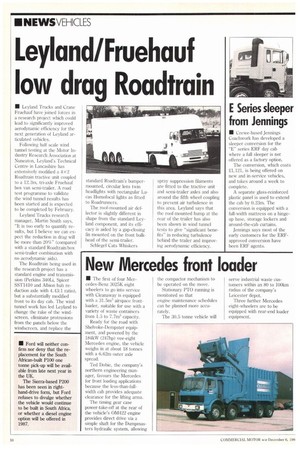Leyland/Fruehauf low drag Roadtrain
Page 12

If you've noticed an error in this article please click here to report it so we can fix it.
• Leyland Trucks and Crane Fruehauf have joined forces in a research project which could lead to significantly improved aerodynamic efficiency for the next generation of Leyland articulated vehicles.
Following half scale wind tunnel testing at the Motor Industry Research Association at Nuneaton, Leyland's Technical Centre in Lancashire has extensively modified a 4x2 Roadtrain tractive unit coupled to a 12.2m, tri-axle Fruehauf box van semi-trailer. A road test programme to validate the wind tunnel results has been started and is expected to be completed by February.
Leyland Trucks research manager, Martin Smith says, "It is too early to quantify results, but I believe we can expect the reduction in drag will be more than 20%" (compared with a standard Roadtraiwbox semi-trailer combination with no aerodynamic aids).
The Roadtrain being used in the research project has a standard engine and transmission (Perkins 340Li, Spicer SSI1410 and Albion hub reduction axle with 4.43:1 ratio), but a substantially modified front to its day cab. The wind tunnel work has led Leyland to change the rake of the windscreen, eliminate protrusions from the panels below the windscreen, and replace the standard Roadtrain's bumpermounted, circular lens twin headlights with rectangular Lucas Homofocal lights as fitted to Roadrunners.
The roof-mounted air deflector is slightly different in shape from the standard Leyland component, and its efficacy is aided by a gap-closing fin mounted on the front bulkhead of the semi-trailer.
Schlegel Cats Whiskers spray suppression filaments are fitted to the tractive unit and semi-trailer axles and also around the fifth wheel coupling to prevent air turbulence in this area. Leyland says that the roof-mounted hump at the rear of the trailer has also been shown in wind tunnel tests to give "significant benefits" in reducing turbulence behind the trailer and improving aerodynamic efficiency.














































































































